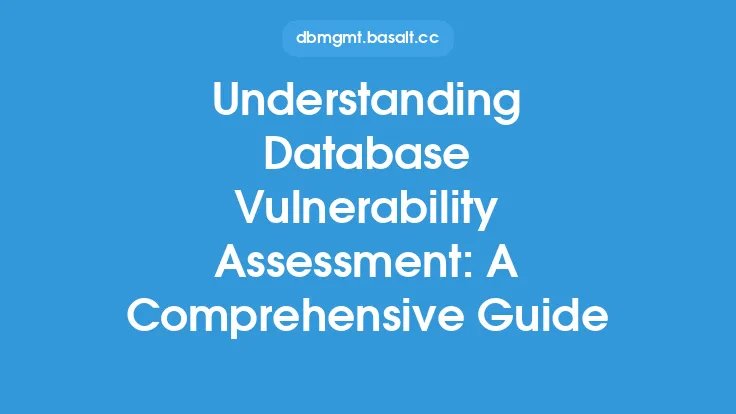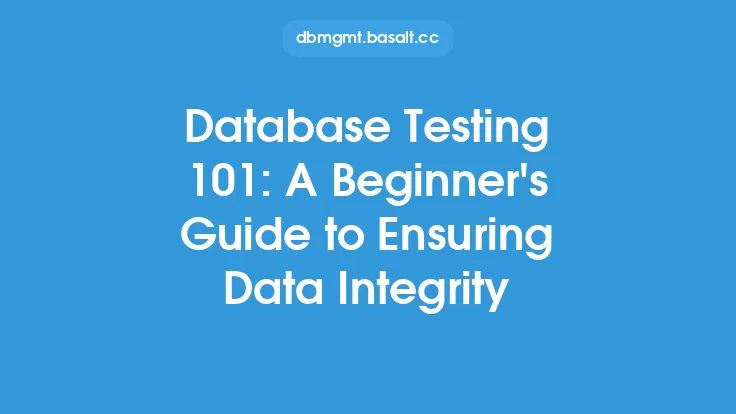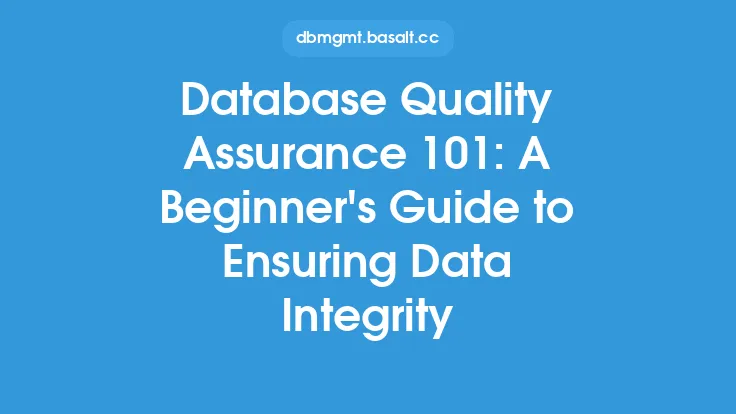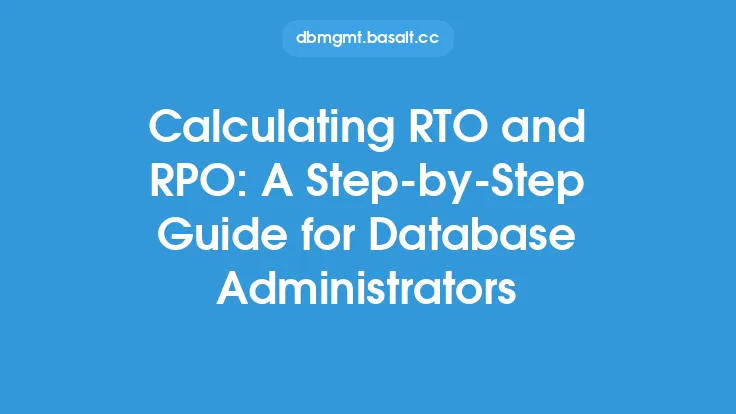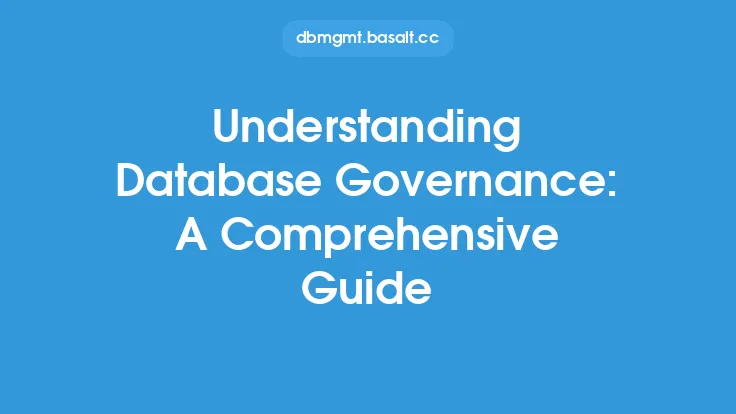As a beginner in the field of database administration, understanding database compliance is crucial to ensure the security, integrity, and reliability of your organization's data. Database compliance refers to the process of ensuring that your database management system (DBMS) adheres to a set of rules, regulations, and standards that govern the collection, storage, and dissemination of data. In this article, we will delve into the world of database compliance, exploring its importance, key concepts, and best practices for achieving compliance.
Introduction to Database Compliance
Database compliance is a critical aspect of database administration, as it helps to protect sensitive data from unauthorized access, theft, or corruption. Compliance requirements vary depending on the industry, location, and type of data being stored. For example, organizations that handle credit card information must comply with the Payment Card Industry Data Security Standard (PCI DSS), while those that handle personal health information must comply with the Health Insurance Portability and Accountability Act (HIPAA). Failure to comply with these regulations can result in severe penalties, fines, and damage to an organization's reputation.
Key Concepts in Database Compliance
To understand database compliance, it's essential to familiarize yourself with some key concepts. These include:
- Data governance: The process of managing and controlling data throughout its lifecycle, from creation to disposal.
- Data security: The measures taken to protect data from unauthorized access, theft, or corruption.
- Data privacy: The protection of personal information and sensitive data from unauthorized access or disclosure.
- Compliance frameworks: A set of rules, regulations, and standards that govern data management and security, such as PCI DSS, HIPAA, and the General Data Protection Regulation (GDPR).
- Risk management: The process of identifying, assessing, and mitigating risks to data security and compliance.
Database Compliance Requirements
Database compliance requirements vary depending on the industry, location, and type of data being stored. Some common compliance requirements include:
- Data encryption: The process of converting plaintext data into unreadable ciphertext to protect it from unauthorized access.
- Access control: The measures taken to control who can access, modify, or delete data.
- Auditing and logging: The process of tracking and recording all database activities, including access, modifications, and deletions.
- Data backup and recovery: The process of creating and storing backups of data to ensure business continuity in the event of a disaster or data loss.
- Compliance reporting: The process of generating reports to demonstrate compliance with regulatory requirements.
Best Practices for Achieving Database Compliance
Achieving database compliance requires a combination of technical, administrative, and procedural controls. Some best practices for achieving compliance include:
- Implementing a compliance framework: Establishing a set of rules, regulations, and standards to govern data management and security.
- Conducting regular risk assessments: Identifying, assessing, and mitigating risks to data security and compliance.
- Implementing data encryption and access control: Protecting data from unauthorized access, theft, or corruption.
- Monitoring and auditing database activities: Tracking and recording all database activities to detect and respond to security incidents.
- Providing training and awareness: Educating database administrators, developers, and users on compliance requirements and best practices.
Technical Considerations for Database Compliance
From a technical perspective, achieving database compliance requires a range of measures, including:
- Database design and configuration: Designing and configuring databases to ensure compliance with regulatory requirements.
- Data modeling and normalization: Organizing and structuring data to ensure data integrity and consistency.
- Database security features: Implementing database security features, such as encryption, access control, and auditing.
- Compliance tools and software: Using specialized tools and software to monitor, audit, and report on database activities.
- Regular software updates and patches: Keeping database software up-to-date with the latest security patches and updates.
Conclusion
In conclusion, understanding database compliance is essential for ensuring the security, integrity, and reliability of your organization's data. By familiarizing yourself with key concepts, compliance requirements, and best practices, you can help your organization achieve compliance and avoid the risks associated with non-compliance. Remember, database compliance is an ongoing process that requires continuous monitoring, auditing, and improvement to ensure the protection of sensitive data. By following the guidelines and best practices outlined in this article, you can help your organization stay ahead of the curve and maintain a strong compliance posture.
